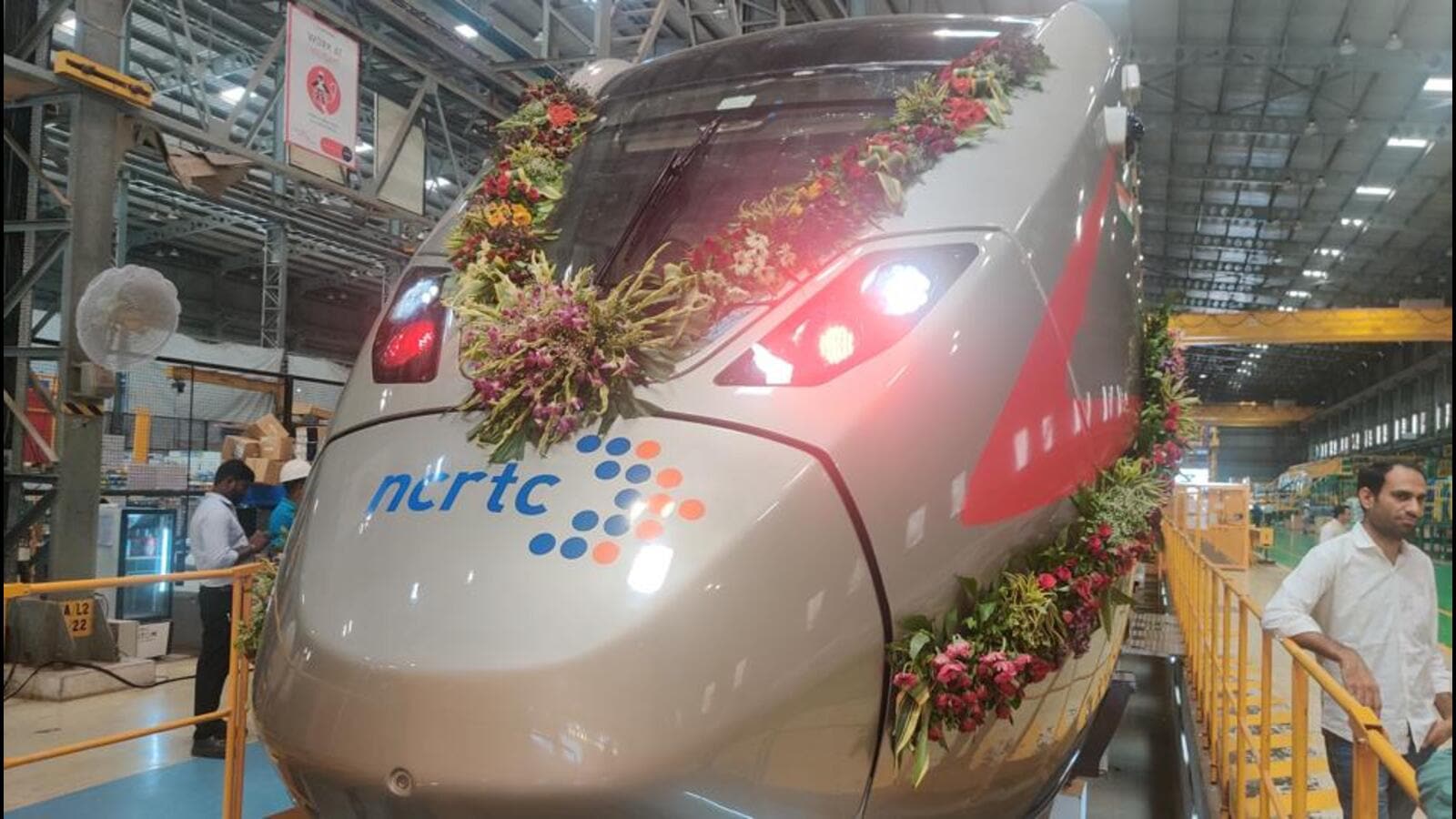The National Capital Region Transport Corporation (NCRTC) on Saturday received the first trainset of the country’s first Regional Rapid Transit System (RRTS) project at Alstom’s plant in Savli, Gujarat.The first fully-fitted trainset will be transported by road on Monday and will reach Ghaziabad’s Duhai depot in the next couple of days. “A true embodiment of the ‘Make in India’ initiative, this trainset was designed in Hyderabad and indigenously manufactured in Savli. It is imperative that we have a green public transport to harness the vast economic potential that lies in our metropolitan cities. RRTS can be credited with many firsts in the railways and transport sector. India has the industrial capacity to produce world-class trainsets for urban mobility,” said Hardeep Singh Puri, Union minister of housing and urban affairs (MoHUA), through a video message.Puri added that with RRTS, India is moving towards becoming a global leader in transitioning to green modes of transport that will encourage sustainable development, reduce vehicular traffic as well as environmental pollution.“With design speed of 180kmph, this new age transit system will help in managing rapid urbanisation and polycentric development across the region,” added Puri.“The fare structure is still being worked out. Surveys are being done to ensure optimal level of passengers as well as revenue. Soon urban areas will account for 80% of the country’s gross domestic product (GDP) and Delhi will extend to Meerut in Uttar Pradesh and Dharuhera in Haryana. Such rapid growth requires rapid connectivity and RRTS is the answer,” said Manoj Joshi, secretary, MoHUA.The manufacturing facility of Alstom at Savli will deliver a total of 210 cars for the first corridor under the ‘Make in India’ initiative. The first few coaches have been made in less than nine months, ahead of the delivery schedule. The company will deliver a total of 40 trainsets of different capacities, including 10 three-car trainsets for Meerut Metro, bundled with rolling stock maintenance for 15 years.“The RRTS has a very high level of localisation as compared to all other similar projects in the country. Over 83% of all the high-quality products for the entire rapid transit system is made for the first time in India. The trainsets are made entirely in India, giving impetus to the ‘Make in India’ programme,” said Vinay Kumar Singh, NCRTC, managing director.NCRTC officials said that the high-speed trains will be seen in action very soon as the trial runs are likely to begin in Ghaziabad from December. The trainsets comprising six coaches each will go through rigorous testing for about six months and thereafter the trials will start for the 17-kilometre priority section in Ghaziabad.“This is going to be a completely new experience and will change the way the National Capital Region (NCR) travels. People are used to Metro trains, but when these trains zoom past at 180kmph, it will be an altogether different sight. The amount of time it will save and the advanced connectivity will definitely make travel a hassle-free daily affair between Delhi, Ghaziabad and Meerut. It will also increase job opportunities for people living in remote areas,” said Puneet Vats, chief public relations officer (PRO), NCRTC.According to officials, the tentative timeline for the start of operations along the priority line is the first half of 2023.The RRTS project is pegged at ₹30,274 crore and its 82-kilometre-long route is likely to get commissioned in March 2025. The 17km priority stretch (Sahibabad to Duhai) will be the country’s first RRTS route that is likely to commence passenger operations by March 2023. The RRTS trains will have premium coaches with 60 seats while the standard coaches will have 70 seats. A six-coach RRTS train will be able to ferry 1,750 passengers.Alstom (formerly Bombardier) has been awarded the contract for the trains by NCRTC.The trainsets, with their sleek and modern design, will be light-weight and equipped with a regenerative braking system. They will be compatible with automatic train protection (ATP), automatic train control (ATC) and automatic train operations (ATO) systems. The regenerative braking system is an important feature of these trains, which generates electricity when the brakes are applied and the power goes back to the electric grid through the overhead traction of the train system. The RRTS trains have ergonomically designed 2×2 transverse seating, wide standing space, luggage racks, CCTV cameras, laptop/mobile charging facility, dynamic route maps, auto control ambient lighting system, heating ventilation and air conditioning system (HVAC) and other amenities.The air-conditioned RRTS trains will have standard as well as premium class (one coach per train) along with one coach reserved for women commuters.RRTS is the first-of-its-kind system in which trains, with a design speed of 180 kmph, will be available every 5 to 10 minutes and cover the distance between Delhi and Meerut in 55 minutes.
.


